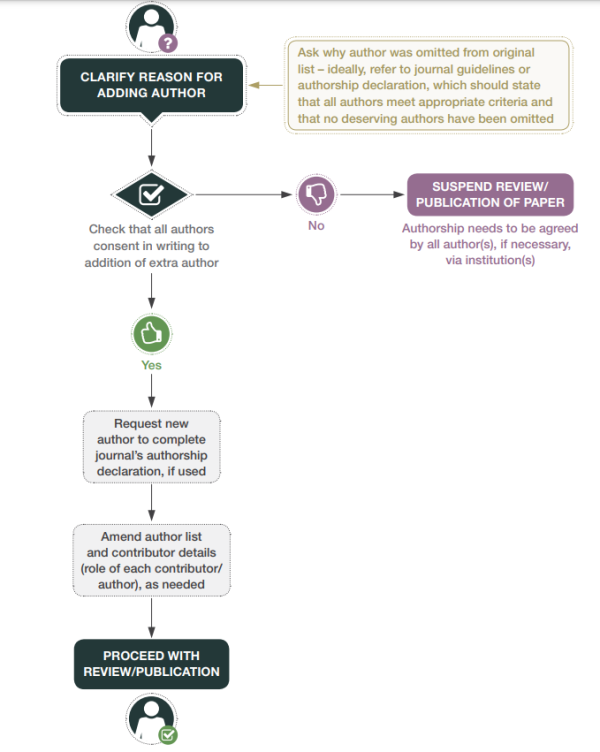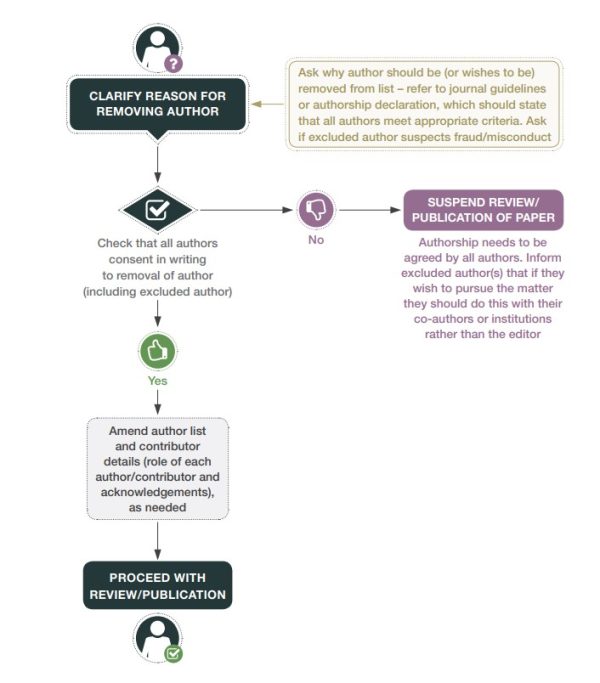First posted on the ORIGINal Thoughts Blog
By Diane Punger
Peer Review Manager, Origin Editorial
Take Home Points:
Having a clearly written and transparent authorship policy on your journal website can have its benefits. For example, potential submitters will see what the journal expects of them, as well as what their responsibilities are, before they agree to submit to your journal. Because the policy is public, it will also be used as a tool in the Editorial Office when policy isn’t followed and will be easily referenced in communication with the author.
Defining an Author
Who should be considered in your author list? According to the Committee on Publication Ethics’ (COPE) definition, “The term authorship can refer to the creator or originator of an idea or the individual or individuals who develop and bring to fruition the product that disseminates intellectual or creative works.” 1
The author list can consist of single or multiple individuals or even a group (consortia) who have made significant contributions to the research and are accountable for what has been written. They are responsible for the accuracy of their research and can provide proof of their results. Keep in mind some communities follow specific criteria for authorship. You could consider the International Committee of Medical Journal Editors’ (ICMJE) section on “Defining the Role of Authors and Contributors” when defining authorship.2
Consortia authorship is a collective authorship, sometimes identified as a Team or Group. Guidelines for ways to identify members of the group who have and have not participated in the submission should be made clear, so that proper recognition is given to members who have played an active role. Individuals of consortia will be discoverable in PubMed. See Nature, for example, for ways consortia authorship can be managed.3
Since author lists can vary in length, it is imperative for the submitter to fully understand the difference between an author and a contributor. Like authors, contributors can in some way support the research, but the role isn’t as significant as an author. Individuals who have made minor contributions, such as access to a research lab, hospitality, etc. should not be given authorship, but can be noted in an acknowledgments section. The definition of these roles should be made available in the authorship guidelines on the journal’s website. Also, many journals have instituted CRediT (Contributor Role Taxonomy),4 delineating the role of the individual author, as part of their submission workflow.
Respecting the Role of the Corresponding Author
The corresponding author is the voice of all authors on the submission. You may have seen publishing documents such as copyrights, permissions, and proofs state “on behalf of all authors.” This role is important in publishing as it allows for a point person for communication and corrections, reducing versioning and creating organization. The corresponding author is also responsible for fielding questions from readers. Rely heavily on the corresponding author, especially when co-authors reach out and remember to loop-in the corresponding author in such cases, when they have been left out of the conversation.
Understanding the role of the corresponding author and expectations is important to the individual. Corresponding authors should never share login credentials for our peer-review systems or emails with embedded links with their co-authors. They should also never include their email address in co-author profiles in our peer-review systems. Author profiles should be unique to the individual; multiple profiles are discouraged and can create a loophole for confidential information.
Understanding Authorship Changes and the Importance in Obtaining Agreement
No matter how many authors are listed, all authors must agree on the author list. Any change (removal, addition, order) requires a consensus. This includes any author who has been added or removed. Quite often, author changes occur during revisions. This can be due to a task of redoing part of the research discussed after editor decision or an omission on the part of the corresponding author.
Have you ever looked at an author list and wondered if there is a meaning behind the order? While the structure of some author lists is obvious, such as alphabetical or grouped by institution, some reasons are not as easy to determine. Order can show the author’s significance to the research or perhaps significance to the field, so, to say-the-least, it can be very meaningful to the individual authors, even if the meaning is not apparent to the reader. Since there is no standard rule for the author’s order, it is important that agreement is reached for any order change. Having an author change workflow in place for author additions, removal, and order change can help you avoid legal disputes later (see Figures 1 and 2); consider transparency as part of your best practices.
Figure 1. Example of Change in Author Flowchart: Adding an Author. Reproduced from COPE Council. COPE Flowcharts and infographics — Changes in authorship. Addition of extra author — before publication ©2021 Committee on Publication Ethics (CC BY-NC-ND 4.0) (Ref. 5).







